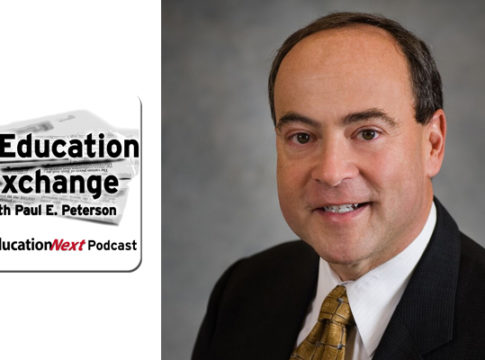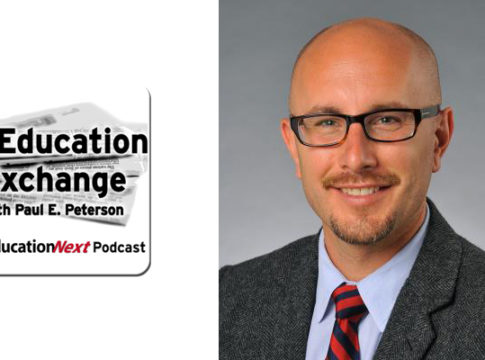Vergara v. California, a 2012 lawsuit that challenged the state’s teacher-tenure laws, terrified teachers unions when it was filed. In April 2016, to the unions’ relief, they won a victory in the case. But that victory is likely to be Pyrrhic. Copycat cases have already been filed in New York and Minnesota that have a much better chance of success, and lawsuits in other states are sure to follow. Ironically, these cases will rely on the same political strategy and legal reasoning that unions have enthusiastically supported in school-finance cases around the country. Having sown the legal wind, the unions will now reap the litigation whirlwind.
 Taking a page from the school-finance advocates’ book, the Vergara plaintiffs concocted a clever but dubious constitutional rationale against the tenure laws. They contended that California’s brief 18-month window for awarding tenure, onerous teacher- dismissal policies, and last-in, first-out requirements adversely affected minority students. This alleged “disparate impact,” they claimed, violated the state constitution’s equal protection clause. The unions suffered an embarrassing defeat when the plaintiffs won at trial—but the judge’s ruling was heavy on political rhetoric and light on legal reasoning (see “Script Doctors,” legal beat, fall 2014). as a result, while unions took a public relations hit, they seemed to be equipped with a strong argument for an appeal.
Taking a page from the school-finance advocates’ book, the Vergara plaintiffs concocted a clever but dubious constitutional rationale against the tenure laws. They contended that California’s brief 18-month window for awarding tenure, onerous teacher- dismissal policies, and last-in, first-out requirements adversely affected minority students. This alleged “disparate impact,” they claimed, violated the state constitution’s equal protection clause. The unions suffered an embarrassing defeat when the plaintiffs won at trial—but the judge’s ruling was heavy on political rhetoric and light on legal reasoning (see “Script Doctors,” legal beat, fall 2014). as a result, while unions took a public relations hit, they seemed to be equipped with a strong argument for an appeal.
That was confirmed in April when a California appellate court overturned the trial judge. The problem with the plaintiffs’ argument, according to the court, was that it did not prove that the statutes in question disproportionately harmed a particular class of children. Instead, the plaintiffs only showed that the teacher- tenure protections potentially harmed all students. Winning because you might harm all children, not just some, is not exactly a resounding victory, but the unions were happy to take it.
Yet their celebration over the ruling could come to an abrupt end when the copycat lawsuits in New York and Minnesota are decided. Smoothing the plaintiffs’ way in Davids v. New York is the 1995 decision in Campaign for Fiscal Equity (CFE) v. New York, a long-running constitutional challenge that contended that the state was failing to adequately fund New York City schools. The case became one of the nation’s most successful educational- adequacy lawsuits when New York’s highest court, the Court of appeals, ruled that the state constitution’s spare education clause guaranteed a “sound basic education” to every child.
Thus, in contrast to Vergara, in which the plaintiffs had to prove that teacher-employment statutes harm a discrete class of students, the New York plaintiffs only have to show that the policies deprive some students of a sound basic education, which CFE defined as “not merely skills, but skills fashioned to meet a practical goal: meaningful participation in contemporary society.” as evidence continues to accumulate that teachers are the most important school-based influence on student achievement, the plaintiffs should find it easy to satisfy this extremely broad standard. Hence, CFE, which the unions enthusiastically supported, created a legal superhighway for the Davids plaintiffs to travel.
In Forslund v. Minnesota, the plaintiffs are relying on the state constitution’s requirement that the legislature provide for a “thorough and uniform” education. as in the New York case, their arguments closely follow the reasoning of adequacy lawsuits from around the country. according to adequacy advocates, vague clauses like “thorough and uniform” actually contain divinable standards that courts can compel the legislature to meet. Compared to proving that schools’ problems stem from inadequate funding, showing that tenure, dismissal, and last-in, first-out policies harm children should be easy.
But even if the lawsuits do not ultimately succeed, the discovery process is likely to create a public relations nightmare for unions. That process will allow the lawsuits’ supporters to publicize embarrassing facts about incompetent teachers protected by tenure and generate momentum for reform in the legislature. Unions will, of course, object to the use of litigation for political purposes, but that has been the strategy of school-finance litigants for decades: use a lawsuit to pressure the legislature to cave in to your demands.
In California, Vergara has certainly generated a torrent of bad coverage for teachers unions. When the union had to defend policies that protected teachers who spelled magician as “magition” and truth as “thruth,” the editorial pages of the Sacramento Bee, the San Francisco Chronicle, and the Los Angeles Times all came out for reform. With the Vergara plaintiffs’ recent appeal to the state Supreme Court, those unpleasant facts will stay in the news even longer. Even if the unions win in court, they’re likely to lose in the court of public opinion.
Joshua Dunn is associate professor of political science at the University of Colorado–Colorado Springs.
This article appeared in the Fall 2016 issue of Education Next. Suggested citation format:
Dunn, J. (2016). Reaping the Whirlwind: Union victory on tenure may be short-lived. Education Next, 16(4), 7.





